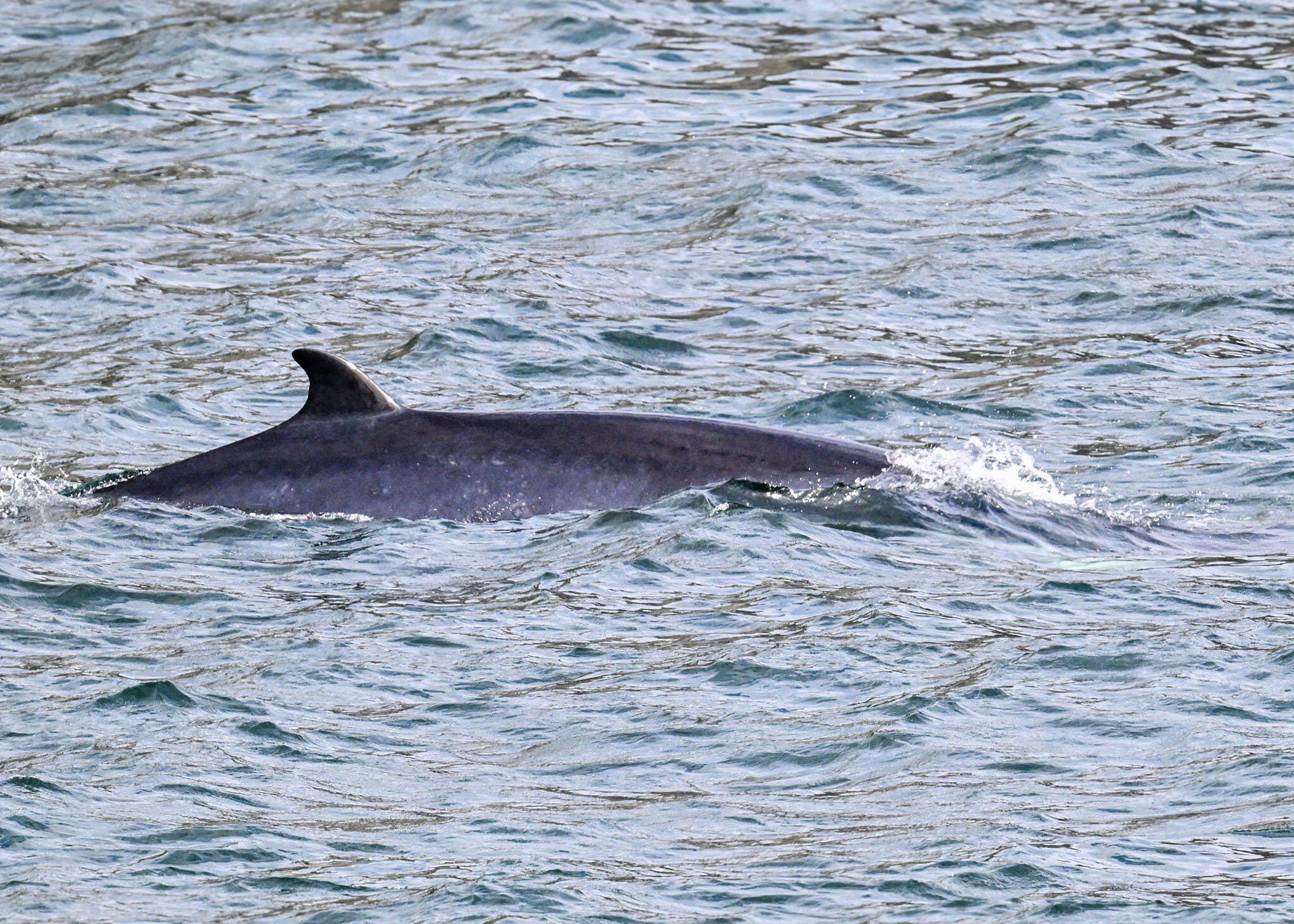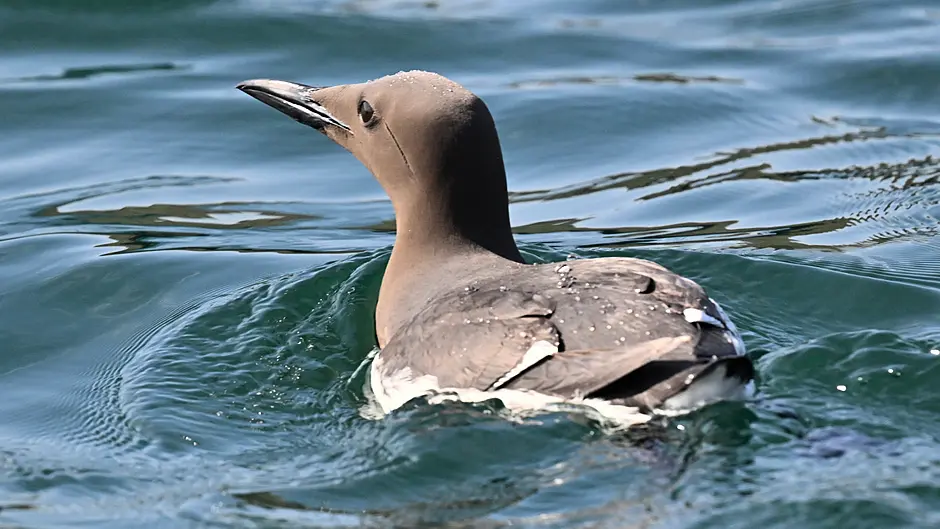
Ireland’s offshore islands offer a vital refuge for many of our native plant and animal species.
I recently travelled to Cape Clear for the island’s inaugural Biodiversity Conference, Comhdháil Bithéolaíochta, where plans were unveiled to document and map the rich natural heritage of this beautiful island.
The island’s biodiversity group, Tograí Chléire, have secured funding from Community Foundation Ireland in partnership with the National Parks and Wildlife Service.
This support has allowed them to employ an ecologist to carry out detailed habitat and species surveys.
The ultimate aim is to produce a Local Biodiversity Action Plan, complete with recommendations on how to protect, and, where possible, enhance, the island’s unique natural environment.
Although the conference was the main reason for my visit, the journey there and the time spent on the island became a nature experience in its own right.
Seabird safari
After parking in Baltimore and boarding the ferry, it felt as though Tograí Chléire had somehow worked magic with the weather.
The day of the conference was mild and still, without so much as a puff of wind. The sun shone brightly, and the deep blue sea sparkled like glass.
As the ferry sliced through the calm water en route to Cape, northern gannets flew alongside us before soaring high and plunging straight down into the sea in pursuit of fish.
Gannets are one of my favourite seabirds, their wingspan is enormous, reaching up to 1.8m, which is longer than I am tall.
They dive from heights of 30 to 40 metres, folding their wings back so they become dart shaped just before they strike the water.
Hitting the surface at speeds of up to 100 km/h, they can reach depths of around 20m to catch their prey.
Their thick skulls help protect their brains on impact, and they even have air sacs between their muscles and skin – nature’s airbags
We were also treated to sightings of guillemots, razorbills, fulmars, great northern divers, and shags, many of them bobbing close to the boat, seemingly unbothered as we motored past.
Basking sharks
The pièce de résistance was coming across a magnificent basking shark.
These gentle giants are listed as endangered, having been driven to the brink of extinction due to hunting and overfishing in the 1950s.
Fortunately, they are now legally protected, though their recovery has been slow. Each spring, basking sharks begin to appear off our coastline, their arrival timed with blooms of microscopic algae and zooplankton on which they feed.
They swim slowly near the surface with their huge mouths agape, ‘basking’ as they filter feed.
Water constantly flows through specially adapted gill rakers that allow them to strain vast quantities of plankton.
It is estimated they filter around two million litres of water per hour.
These sharks can reach lengths of nearly 12 metres, weigh between four and six tonnes, and live up to 50 years.
Our encounter was fleeting, and the ferry remained at a respectful distance to avoid disturbing the shark, but it was a rare privilege and a moment to treasure.
South harbour
As I was giving a rocky shore talk and demonstration at the conference, I made my way straight to South Harbour upon arrival.
The pressure was on to find tangible examples of intertidal life on Cape Clear, in just half an hour.
It was a challenge I thoroughly enjoyed, and with the tide conveniently low, the marine biodiversity on display did not disappoint.
All creatures collected were handled with care and, with thanks, returned to their habitat by Ciarán O’Driscoll.
Highlights included pretty beadlet and strawberry sea anemones, furrowed crabs, broad-clawed porcelain crabs, hermit crabs, and a range of sea snails such as painted topshells and common periwinkles.
There were also plenty of colourful seaweeds to admire.
 The minke whale, spotted from the Baltimore Beacon, surfacing to breathe. (Photo: Nick Haigh)
The minke whale, spotted from the Baltimore Beacon, surfacing to breathe. (Photo: Nick Haigh)
Inspirational talks
In my pursuit of sea life, I sadly missed some of the conference talks, though by all accounts they were excellent.
Attendees spoke of a renewed enthusiasm for managing gardens to support pollinators and for choosing garden plants responsibly, with an awareness of how non-native species can escape and spread into the wild.
The conference also gave John Horton, the new BirdWatch Ireland Cape Clear Bird Observatory Warden, the opportunity to outline future plans for the observatory.
He spoke of raising awareness around bird conservation and encouraging more people to visit the island.
Slinky minke
With the ‘grand auld stretch’ in the evenings at this time of year, there was still time after the ferry returned to visit the Baltimore Beacon.
And there, the perfect end to the day unfolded, the sighting of a minke whale.
We were lucky to catch a glimpse of them because after surfacing just three times, they vanished from sight.
This is typical behaviour for minkes, they can disappear for up to five minutes before surfacing again in a completely different spot.
It is this elusive quality that has earned them the nickname ‘slinky minke’.
Although we lost sight of the whale after that initial display, we were thrilled to have caught even a brief glimpse.
Minke whales can grow up to 10m in length and feed on sprat, sand eels, and herring.
They are also capable of some truly spectacular behaviour. One day, I hope to witness a spy hop, when a whale rises vertically out of the water, snout and eye visible, apparently to take a look around above the surface.
Most dramatic of all are full breaches, when the whale launches out of the water and crashes back down with a mighty splash.
 A northern fulmar, these birds have a specialised gland in their nostrils to excrete the excess salt they take in. (Photo: Nick Haigh)
A northern fulmar, these birds have a specialised gland in their nostrils to excrete the excess salt they take in. (Photo: Nick Haigh)
Take the opportunity
We are truly fortunate to live where we do, on the edge of the Atlantic, and even more fortunate to have such easy access to island adventures.
The weather may not always match sunnier European island destinations like Lanzarote or Majorca, but on a fine day, when the lush green of the land contrasts with the deep blue of the sea, there is no better way to spend it than hopping on a boat and visiting one of our offshore islands.







